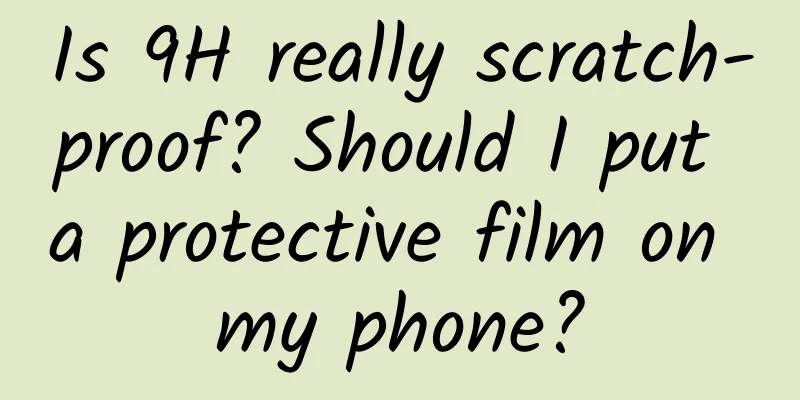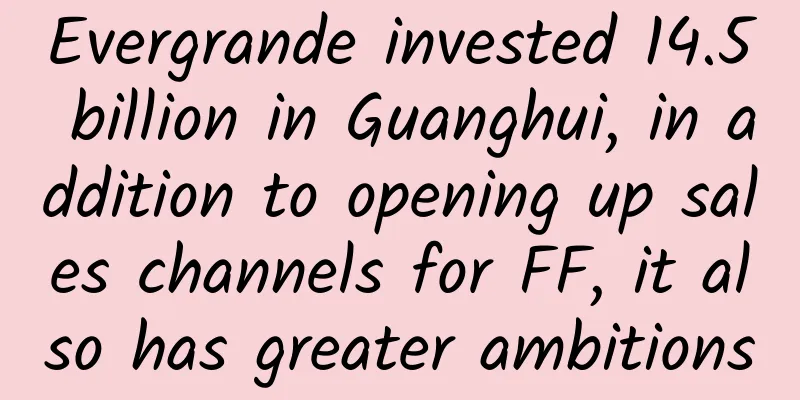Is 9H really scratch-proof? Should I put a protective film on my phone?

|
According to the material of the film, it can be roughly divided into two types: polymer plastic and glass. Polymer plastic can be subdivided into PP, PVC, PET, ARM, and glass can be divided into ordinary glass, Corning Gorilla, AGC Dragon Trace, and Schott. PP and PVC have been basically eliminated by the mainstream market in the Nokia era because of their poor scratch resistance, poor light transmittance, and easy to leave residual adhesive when peeled off. The main force of plastic film is PET, which has much better light transmittance than the first two and no residual adhesive. It is used by most low-end films at present. However, this type of film has high reflectivity, and you have to look at the angle to see the screen under strong light. In addition, it is easier to leave fingerprints and oil stains on the surface. As the most popular plastic film, it solves the problems of reflection and oil stain to a certain extent. But it is still a second-tier film. Plastic makes its hardness never improve. Basically, it will be worn out after one month of use. At this time, with the release of iPhone, the wave of touch screens was brought about. Corning is well-known for its support of Apple. Glass materials have also entered a stage of rapid improvement. Due to the different formula, Corning glass has a much higher light transmittance, strength and toughness than traditional glass. In layman's terms, it means that it will not affect the clarity of the screen, is not easy to scratch, and is not easy to break. However, with the explosion of smartphones, two other giants have emerged in the glass material industry, AGC and Schott. In comparison, AGC's screen is relatively tougher and not easy to break; Schott has higher strength and is not easy to scratch. But you can't have both toughness and strength. So both are slightly inferior in one aspect. It is important to note that Corning and AGC Schott provide complete screen glass cover plates to mobile phone manufacturers, but they only sell raw materials to film manufacturers. That is, the later processing and production have nothing to do with these brands, and it is just a gimmick in the commercial publicity of the film manufacturers. In addition, false thickness is also a trick they often play. The relatively cheap ones sold on Taobao are basically ordinary domestic glass. Why would you want Gorilla Glass for 9.9 yuan with free shipping? Most of the glass films on the market are made of AGC glass, whose shipment volume is far greater than the sum of Corning and Schott. As for the glass materials of these three companies, for ordinary users, you can hardly tell the difference, so it is not a point you need to worry about when buying film. So what are frosted and anti-peeping films? This is basically around 2010, when smartphones first started to explode. At that time, the glass industry was not as mature as it is now, so these mainly talk about the processing technology of plastic films. There are mainly high-definition films, frosted films, mirror films, diamond films, anti-peeping films, etc. HD film is easy to understand, it is just an ordinary young man in the film industry, basically no processing is done on the surface texture and material. Frosted film is probably a stupid young man, in order to solve the problem of HD film easily sticking fingerprints, the smooth surface close to the mirror surface is made into a diffusely reflective frosted surface. Fingerprints that disturb the picture quality are indeed invisible, but the screen looks like it is almost dropped from 1080P to 720P. The mirror film is a high-definition film with a layer of special reflective coating added inside. When the screen is not turned on, you can use the phone as a mirror. But when you want to use the screen, you find that it is still a mirror... Diamond film is probably the self-proclaimed arty youth of Esby. The film material is evenly scattered with bling bling silver sequins that can reflect light. After applying it, it seems like the phone is covered with dandruff. Why do some people still think this thing is beautiful? Anti-peeping film is for pretentious young people. It uses super small blinds that cannot be adjusted in angle, and basically can only be seen by people in the front. How to say it, when you are chatting with your mistress on WeChat, it may be useful if you are afraid that your wife will see it. But if you need to hold up your phone to take a photo, you can only peek from the side. What should you do at this time? Are there any pitfalls when buying glass film? Of course there are, and they are all pitfalls. 1. Advertisements always say something like 9H and resistance to knife cuts and keys slipping. Are they really that strong? Before we talk about this, let's learn about the unit of hardness. Mohs hardness is usually used to indicate the hardness of materials, from 1 to 10. Pure quartz is about 7, tempered glass is about 6 to 7, iron is between 4 and 6, sapphire is 9, and an everlasting diamond is 10. If you use a 6" iron tool to scratch a 6" tempered glass, it's hard to believe that it can be scratched. In fact, it is sand that damages the screen and the glass film, and its main component is silicon dioxide, which is pure quartz. If you are afraid of scratches, why don't you use pure quartz for the screen or film? Because pure quartz is too brittle and has poor toughness, it will break with a little force. That's why manufacturers like Corning mix other ingredients into the glass to solve the problem of the screen being fragile. There are many films on the market that claim to be sapphire glass, but in fact, they have nothing to do with sapphire. No matter what kind of glass, the main component is still silicon dioxide. If impurities are mixed in, the hardness will never reach 7. The main component of sapphire is corundum, which is aluminum oxide. The hardness of pure aluminum oxide is very high, almost second only to diamond. But as mentioned above, hardness and toughness cannot be achieved at the same time. Sapphire will break at the slightest force. In addition, the light transmittance of sapphire is also different from that of glass. More importantly, sapphire is not only expensive, but also has a very low production volume. It is okay to make a small area of sapphire, but it is impossible to make so much sapphire on a large scale for large-size screens. As for the 9H, that is the H of the pencil's HB force, which is another unit of hardness. Don't get excited when you see that 9 is bigger than 7. Even if H wins, have you ever seen a pencil that can't be sharpened by a knife? So it is still softer than sand, and sand can still scratch. 2. What are the white edges and colored edges of the film? In the past two years, in order to improve the grip of mobile phones, manufacturers have bent the edges of the screen. Perhaps the industry that is most affected by this is the traditional film industry. Glass films are not as soft as plastic, so they can be bent and removed. So the first step of the solution was to only make the film as big as the screen. Since it can't be bent, just leave this area empty. The reason for the white edge is that the film is too large and a part of it is not attached, which looks like a white edge. The color edge is that the film is too small and the edge of the film just blocks the screen, and then according to different light refraction, it becomes a visual color edge. There are probably three reasons for these two phenomena: 1. Your workmanship is not good and the film is pasted crookedly; 2. You sell inferior films for cheapness; 3. Your skills are fine and the film is pasted properly, but something still goes wrong, which is a tolerance problem. During the manufacturing process, it is impossible to guarantee that the size of any product is exactly the same. As long as it is within a certain reasonable range, it is acceptable. This is the error, and it is the same for mobile phones and film. However, when the screen size is smaller than the standard value and the film is larger, although they are within the tolerance range, the in and out look can still drive people with obsessive-compulsive disorder crazy. 3. What is the high-tech 2.5D film? Is it a full film? No, no. We all know that the film has thickness. The thickness of the traditional glass film is perpendicular to the outer surface, that is, the angle is 90 degrees. The so-called 2.5D is equivalent to polishing it into a smooth surface to make it feel better. Didn't the above say that the primary solution is to make the film smaller? Later, the merchants thought, since they can bend the glass screen, why can't they bend the film which is also made of glass? Then... the film also bent. As for the full coverage glass film, there are three types of solutions: The glass is still straight, so I can just apply more glue on the edges and fill the gaps, right? But this method worked for phones in the past two years. As soon as curved phones came out in the past two years, it immediately became useless. It is OK to splice plastic or other flexible materials with glass, so that I can cover all four sides for you. It is indeed no problem, and the screen is fully protected, but after using it for a long time, I found that the plastic can't stand the deformation, and it is really ugly when it warps up. This is a relatively high-end solution at present, which is to soften the glass with high temperature and then bend it. This method has high requirements for craftsmanship and requires more polishing. Therefore, the cost of such a film is generally more than 100 yuan. However! The tolerance problem still cannot be solved. 4. How to choose the thickness of glass film? As more and more mobile phones have pressure sensing functions, 0.3mm thickness is the entry level. Thickness exceeding this will affect the effect of pressure sensing. 0.2mm is the mainstream level, and 0.15mm is probably the high-end level of the industry. As for 0.1mm and below, it is basically a scam by unscrupulous manufacturers. What the manufacturers won't tell you is that they are mislabeling. Most glass films don't reach the thickness on the packaging. The few tenths of a millimeter mentioned above do not include the thickness of the glue. Generally, the thickness of the glue is between 0.1 and 0.15 mm. So when you stick it on your phone, you will still feel it is very thick, especially for the concave Home button on some phones. But this glue is also a good thing. In addition to fixing, if your screen protector breaks, it can ensure that the glass will not splash out and hurt people. In addition, good glue can cover up the surface of the screen and its minor scratches. Is it necessary to put a film on your mobile phone? This is really a matter of personal opinion. For example, if you want to change your iPhone every year and sell the old one before buying a new one next year, then there's nothing wrong with taking good care of it. As for the drop protection, I personally think it is the industrial design and the protective case that are responsible. The effect of such a thin film is really limited. But as for me, I don’t use a film or a case. As far as the current technology is concerned, even if it is a fully laminated glass film, it happens to be 100% adapted to your phone, and there will be no white edges or bubbles, or dust on the edges. The feel is still different from not using a film. Even though the iPhone has tried hard to integrate the screen and the back cover, you can still feel the slight difference when you touch it. And applying the best film now will only magnify this difference. You say that for each generation update, they would like to spend one or two years or even longer to reduce the thickness of a product by a few tenths of a millimeter. If you apply a 20-yuan film, well, it's all in vain. Will it scratch if you don't use a screen protector? Of course it will. Will it affect the display? I don't think so. After all, you don't rub the screen on the sand every day, right? And the hardness of tempered glass is much greater than that of plastic film, so it won't become unbearable to look at after just one week of exposure. Take my phone for example, it has been exposed for half a year, and I can see a lot of small scratches under the light when the screen is turned off, but I won't even notice it when the screen is unlocked. As a winner of Toutiao's Qingyun Plan and Baijiahao's Bai+ Plan, the 2019 Baidu Digital Author of the Year, the Baijiahao's Most Popular Author in the Technology Field, the 2019 Sogou Technology and Culture Author, and the 2021 Baijiahao Quarterly Influential Creator, he has won many awards, including the 2013 Sohu Best Industry Media Person, the 2015 China New Media Entrepreneurship Competition Beijing Third Place, the 2015 Guangmang Experience Award, the 2015 China New Media Entrepreneurship Competition Finals Third Place, and the 2018 Baidu Dynamic Annual Powerful Celebrity. |
<<: IEA: India's natural gas market outlook report to 2030
>>: iPhone hidden function exposed: can save lives at critical moments
Recommend
I took my friends to a high-end private massage club in Xi'an, which was definitely beyond your imagination.
[Xi'an Sauna Bath Recommendation], [Xi'an...
How to write a hot note on Xiaohongshu?
Some time ago, in order to deeply experience the ...
Nokia brand, worth $55.2 billion in 2008, now discontinued
[[121650]] According to media reports, Microsoft ...
One of the biggest puzzles of the 21st century: How were the elements formed after the Big Bang?
The author or source of this article or its origi...
US expert: China's auto industry is developing synchronously in all fields
At a recent symposium organized by the University...
360 Analysis: Traffic analysis tool for advertising and promotion effectiveness!
360 Analysis 360 Analysis is a statistical analys...
Case Review | How did Mafengwo build its brand IP?
There is a saying: Your success is not only deter...
If you can't find a job after graduation, you are a failure? These 5 "dangerous misunderstandings" are quietly destroying young people's mental health
May 25th of each year is the National College Stu...
How can junior operators learn from their predecessors and get effective help?
In every industry and every position, at the init...
How do astronauts know what time it is? Don't worry, they have "space watches"!
On Earth, we are used to working at sunrise and r...
How to plan a successful event promotion?
Event operation , planning different marketing ac...
11 ways to improve programmers' work efficiency and keep you away from overtime
Are "hardworking" and "working ove...
Hong Raiders Trend Emotion Hunting Hunting A Intensive Training Camp
Hong Raiders Trend Emotion Hunting Hunting A Stre...
Many Internet celebrity food stores have "turned over", these 5 types of food are very dangerous after spoiling
Key Points ★ Even if part of the fruit is rotten,...
In the hot summer, there is an "otter" that is super sweet! Do otters have their own "bubble effects" when swimming in the water?
The temperature in Nanjing has soared to over 30 ...









